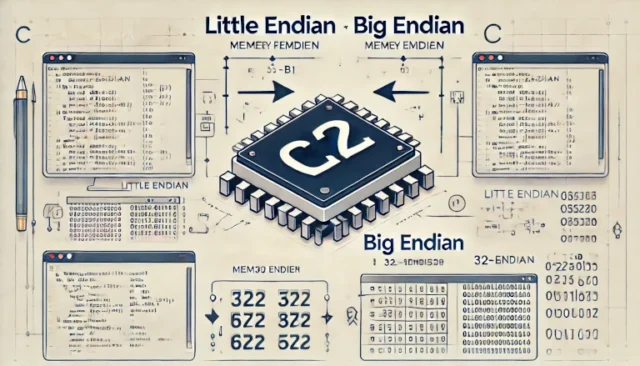Understanding whether your system uses Little or Big Endian representation is critical in low-level programming, especially in embedded systems, networking, and data serialization. These terms refer to the way computers store multi-byte data in memory. In this guide, we’ll dive into how to check Little or Big Endian in C, with clear explanations, sample code, and troubleshooting tips to make the process simple and effective.
What Are Little and Big Endian Formats?
Endianess refers to the byte order in which multi-byte data is stored in memory. In Little Endian, the least significant byte is stored first (at the lowest memory address), while in Big Endian, the most significant byte is stored first.
For example, if the number 0x12345678 is stored:
- In Little Endian:
78 56 34 12 - In Big Endian:
12 34 56 78
Endianess can vary across architectures, making it crucial for developers to identify and handle it explicitly.
How to Check Little or Big Endian in C
Using a Simple C Program
One of the most effective ways to determine endianess is by using a union structure. Here’s a step-by-step example:
#include <stdio.h>
int main() {
unsigned int num = 1;
char *ptr = (char *)#
if (*ptr == 1) {
printf("Little Endian\n");
} else {
printf("Big Endian\n");
}
return 0;
}
In this program, the integer num is cast to a char pointer. If the first byte in memory is 1, the system is Little Endian. Otherwise, it’s Big Endian.
Using a Union for Clarity
Another approach involves using a union to analyze the memory representation:
#include <stdio.h>
union {
unsigned int num;
unsigned char bytes[4];
} test;
int main() {
test.num = 1;
if (test.bytes[0] == 1) {
printf("Little Endian\n");
} else {
printf("Big Endian\n");
}
return 0;
}
In this example, the union overlays the same memory for num and bytes. Checking the first byte of bytes reveals the system’s endianess.
How This Works
In both methods, the key idea is to inspect how the memory stores the least significant byte of a multi-byte integer. By examining the byte stored at the lowest memory address, the program determines whether the system follows Little or Big Endian conventions.
Common Issues and Their Solutions
- Incorrect Memory Address Access
Ensure the pointer or union is correctly set up to point to the memory location of the integer. - Output is Unexpected or Incorrect
Verify the architecture and compiler settings. Cross-compiling for different platforms might affect results. - Need to Check Endianess at Compile-Time
For compile-time checks, preprocessor directives can help. Use:#if __BYTE_ORDER__ == __ORDER_LITTLE_ENDIAN__ printf("Little Endian\n"); #else printf("Big Endian\n"); #endif
Why Checking Endianess Matters
Endianess becomes critical in scenarios like:
- Data Serialization: Ensuring data is stored and read consistently across platforms.
- Network Protocols: Converting data between host and network byte orders.
- Embedded Systems: Interfacing with hardware components that may use a specific endian format.
Enhancing Portability
To ensure portable code across platforms with varying endianess, use standardized functions like:
htonl()andhtons()for converting to network byte order.ntohl()andntohs()for converting from network byte order to host byte order.
Final Thoughts
Determining whether your system uses Little or Big Endian is a fundamental skill for developers working on low-level programming. By using simple C programs and understanding the underlying concepts, you can easily handle endianess issues in your projects. With the tools and techniques covered here, you’ll be better equipped to write robust, portable code for any platform.
